Our Crafty Yellow-Headed Caracara

A COMMON BUT LITTLE-KNOWN BIRD
Our crafty Yellow-Headed Caracara is a familiar bird – they are seen all over our Costa Ballena area, from ocean shores to the towering coastal mountains. The birds have a habit of finding a conspicuous perch and vocalising on-end with a piercing screech (a sound typical of a falcon) and so are frequently heard & seen – but since they do not wear spectacular plumage and are otherwise (seemingly) unremarkable, not many people can tell you their name or anything of note. But this will, hopefully, soon change!
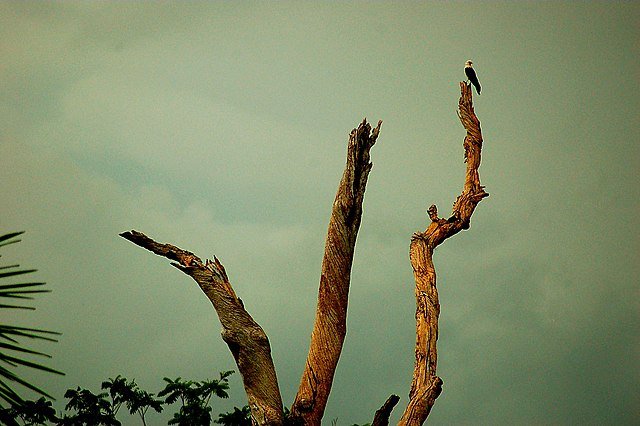
Belonging to the true ‘falcon’ family – Falconidae – the Yellow-Headed Caracara is very unusual as it is omnivorous, relying heavily on scavenging both plant and animal matter. And rare amongst raptors, it is known to feed on fruit! But it also hunts on the wing and is a suspect in fatal livestock attacks.
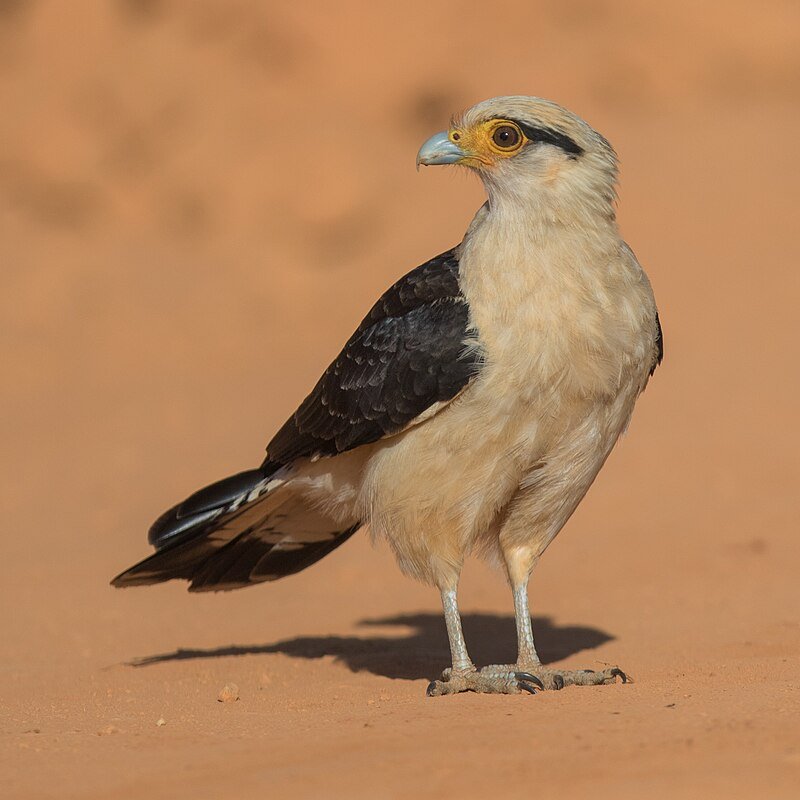
Interestingly the Yellow-Headed Caracara fills the niche which is filled by crows and ravens in more northern and colder climates such as United States and Canada (one Caracara specie can be found in extreme southern US, but no further north).
IT WILL EAT *EVERYTHING*
Being both a scavenger and hunter, and enjoying both animal and plant food, the Yellow-Headed Caracara is very adaptive and versatile – for this reason its range and population size are notable. It is known to land on the backs of larger mammals – including capybaras, sloths, tapirs, and cows – to feed on ticks and parasites.
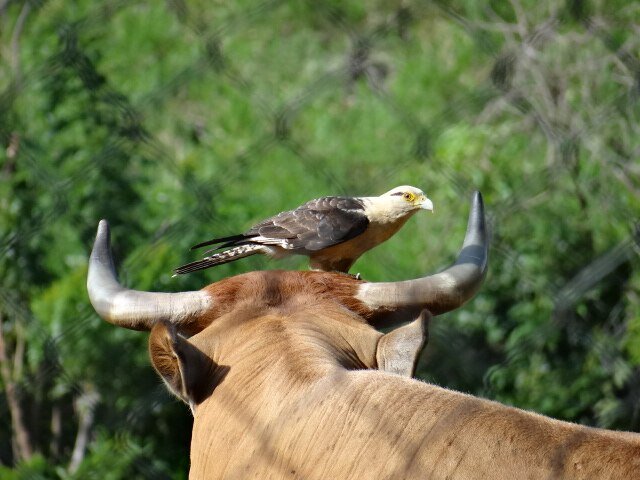
It will also eat carrion, garbage, crabs & fish, reptiles & amphibians, hatchlings & eggs, horse dung, seeds & corn and even fruit (such as those of oil palms and coconuts). While it prefers to feed on the ground it may also hunt from above – it is a falcon, after all. So with so much variety of plentiful food on the menu, it is no wonder that the bird has plentiful time to hang out in trees and screech!
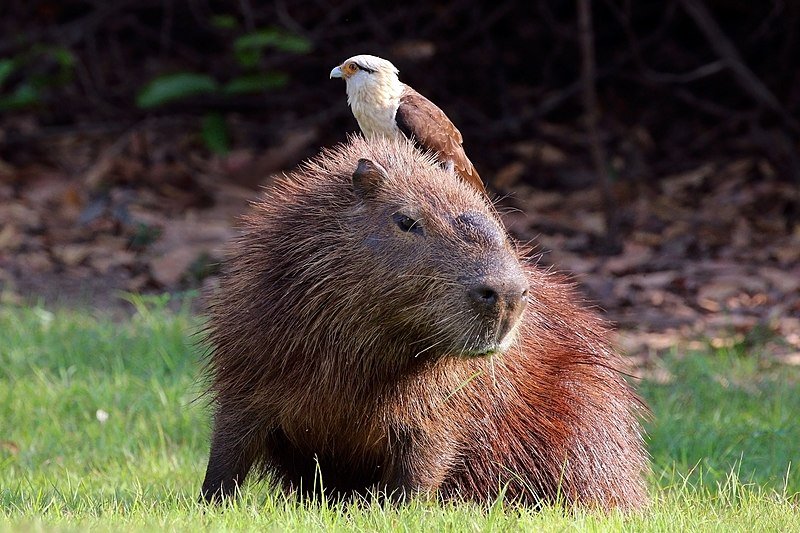
Yellow-Headed Caracaras are known to flock to grass fires where they make a feast out of the animals that are running for their lives in fear of the flames. They are a versatile feeder, and when it comes to survival: versatility always trumps specialization. The fewer food sources an animal tolerates, the greater the chance of the species becoming extinct when the particular food source goes scarce or disappears.
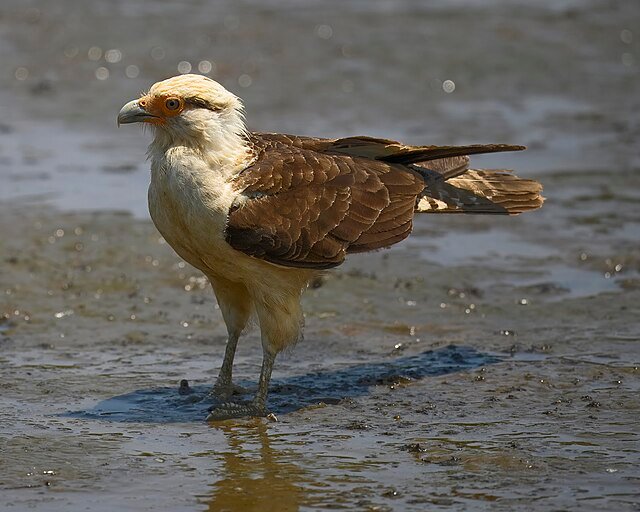
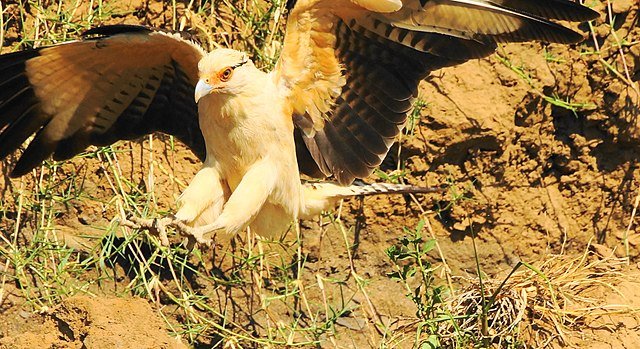
RUMORS OF LIVESTOCK ATTACKS
There is some evidence that the Yellow-Headed Caracara may pray on smaller mammals including young domestic animals. Calves, lambs, and other mammals are known to have been targeted according to the testimonies of farmers and ranchers. Biting into open wounds, the Caracara eats the flesh of the live animals, sometimes causing their demise as they bleed to death or succumb to infection. It has also been reported that Caracaras attack newborn stock animals, pecking at the eyes and soft areas of the body thus causing the death of the newly born animal – I’ve scanned a few public rancher forums and this seems to be a big problem in some areas. And interestingly, as I have compared the Caracara to ravens – ravens are also suspect in similar attacks on newborn stock animals. This is, however, a contentious topic as of yet no direct video evidence of this behavior exists.
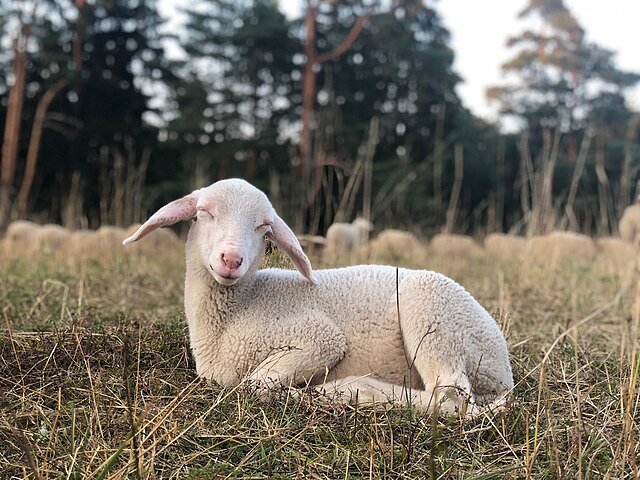
THEY ARE SUPER EAST TO SPOT
Yellow-Headed Caracaras have very particular wing markings – white stripes that resemble decals of WW2 fighter planes. Looking at the photo below, you will realize you have seen these birds dozens and dozens of times – they are unmistakable:
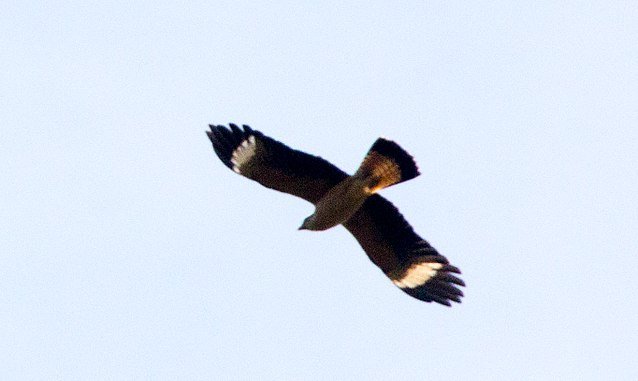
Their loud shrieking calls of keeeeeah or keeeeeee pierce the morning stillness. Sitting on high branches or rooftops, the vocalizations can go on for a long time. If disturbed, the bird will fly off to a nearby perch and resume the calls.
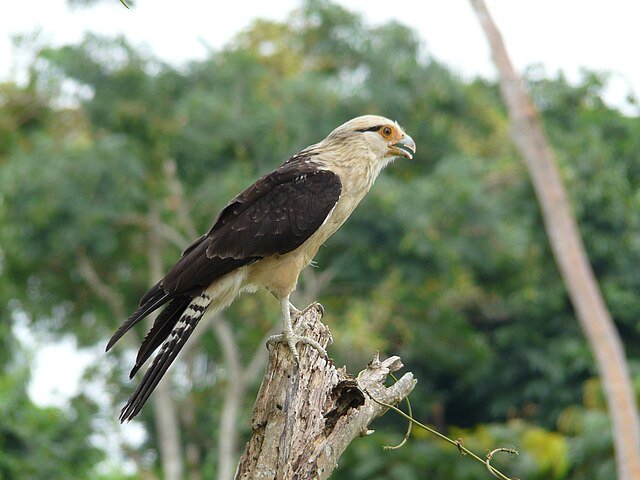
THEY HAVE AN IMPORTANT JOB
As scavengers, Yellow-Headed Caracaras play a vital role in contributing to the nutrition cycle by eliminating dead animals and fertilizing the surrounding landscape with their droppings. Their supplementary diet of insects and fruit helps with pest control and seed dispersal – while their habits of perching on larger mammals assists these animals in getting rid of ticks, parasites and bothersome insects that make home in their fur. A very helpful and beneficial bird, the Yellow-Headed Caracara is often nevertheless despised by farmers who, perhaps rightfully and perhaps not, blame it for livestock attacks and fatalities.

CO-OPERATIVE BEHAVIOUR
Yellow-Headed Caracaras are known as intelligent and adaptive birds, utilizing group hunting and scavenging behaviors as well as cooperative chick-rearing – and working with vultures in locating carrion. They engage in play, performing entertaining aerial aerobatics and showing great curiosity towards new and unusual objects. As mentioned earlier, many of these behaviors are similar to those of crows and ravens – so just like the case with crows and ravens, the Yellow-Headed Caracaras are thought to be very smart, adaptive, curious and playful creatures.
RANGE, HABITAT AND CONSERVATION
Ranging from SW Nicaragua through western Costa Rica, Panama and mainland South America, the Yellow-Headed Caracara is widely distributed. The bird prefers lightly-treed landscapes such as savannahs, orchards, plantations, ranches, and even settled areas like towns. It typically thrives from sea level up to 1,000 meters. The bird is not threatened – in fact, its population of 5,000,000+ is thought to be expanding as more and more forests are cut and converted into the lightly treed landscapes preferred by the species.
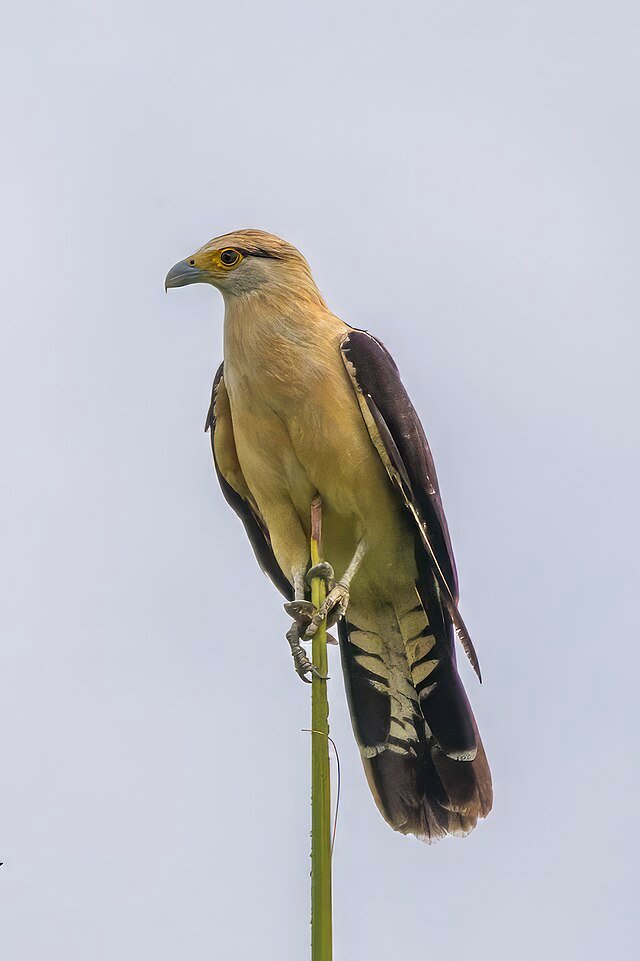
It is interesting to note that the bird is a recent arrival to Costa Rica – its range has been slowly expanding northward and it is just making its way into northern Costa Rica and Southern Nicaragua.
THIS BIRD HAS A FAMOUS FAMILY!
The Yellow-Headed Caracara often stands in the shadows of the larger, more elegant Crested Caracara. Both birds have a similar general appearance and habits, yet the Crested Caracara wears a distinguished plumage and holds a very royal look on its face – and so this bird has received much more attention and consideration.
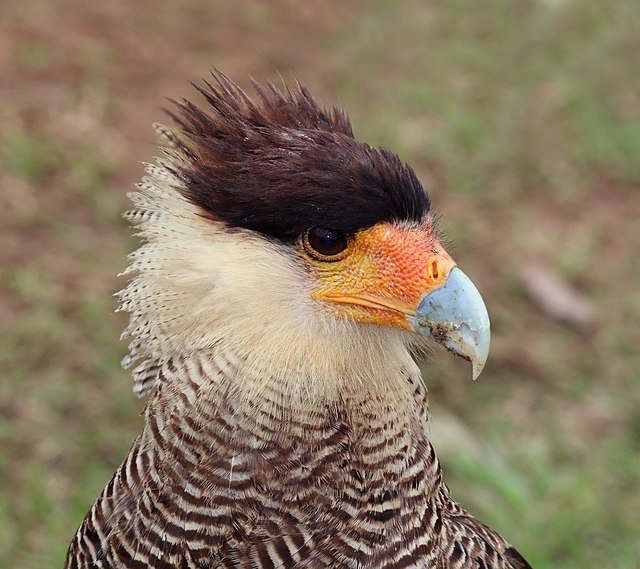
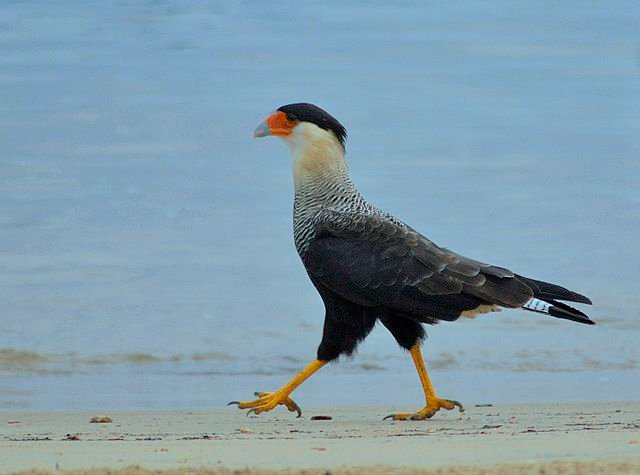
GIVE CREDIT TO THE CARACARA
Regarded as a ‘common’ bird, maybe even a bit boring, the Yellow-Headed Caracara is a master of survival with a few tricks up its sleeve – next time you hear its high-pitched call, see it perched on a high branch, or notice the fighter-plane marking while the bird is on wing, remember that you are looking at a true master of its environment.
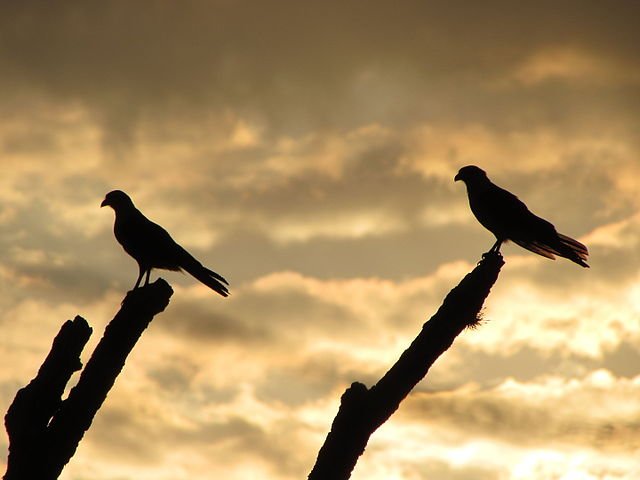
Do you dream of living in the midst of breathtaking tropical scenery and amongst amazing animals like our crafty Yellow-Headed Caracara? At RE/MAX WE SELL PARADISE, we list hundreds of tropical properties – homes, land, farms, estates & businesses – all within a stone’s throw of the amazing rainforests, mountains and beaches that make Costa Ballena a world-famous destination. See our property listings here.
Cover photo c/o Félix Uribe , wikicommons.



